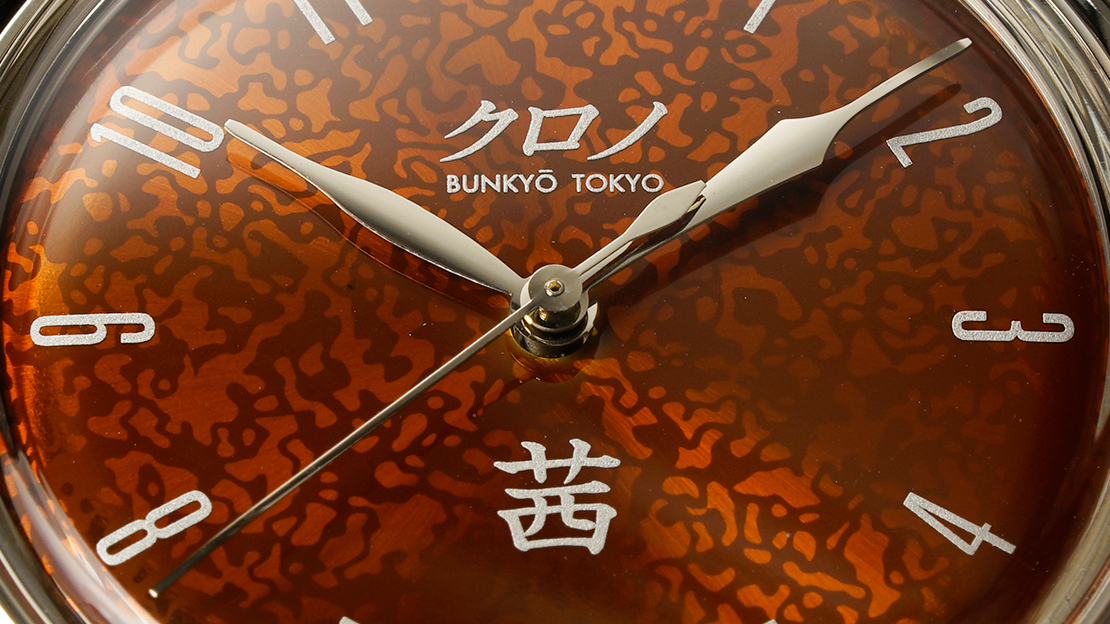Kurono Tokyo started because Hajime Asaoka basically decided that he needed to do something different. The self taught independent watchmaker operating out of Japan was getting an increasingly long waiting list because he does just about everything himself. This includes creating the machines and tools he needs in collaboration with tool makers and machine makers. All this makes it very hard for him to expand production. He really is extremely hands on and very attentive to detail.
His answer was to create another line that was clearly different from what he did in his own personal workshop and Atelier, and this became Kurono Tokyo. Many collectors would rather that Hajime Asaoka concentrated on handling the demand for his Atelier watches, but that really doesn’t seem to be an option because he really wants to do everything exactly the way he is doing it and there is no real way to make a significant increase in production numbers. If he made a second line that was still fine watchmaking but handled by others or a team I don’t think that would have answered the concerns either.
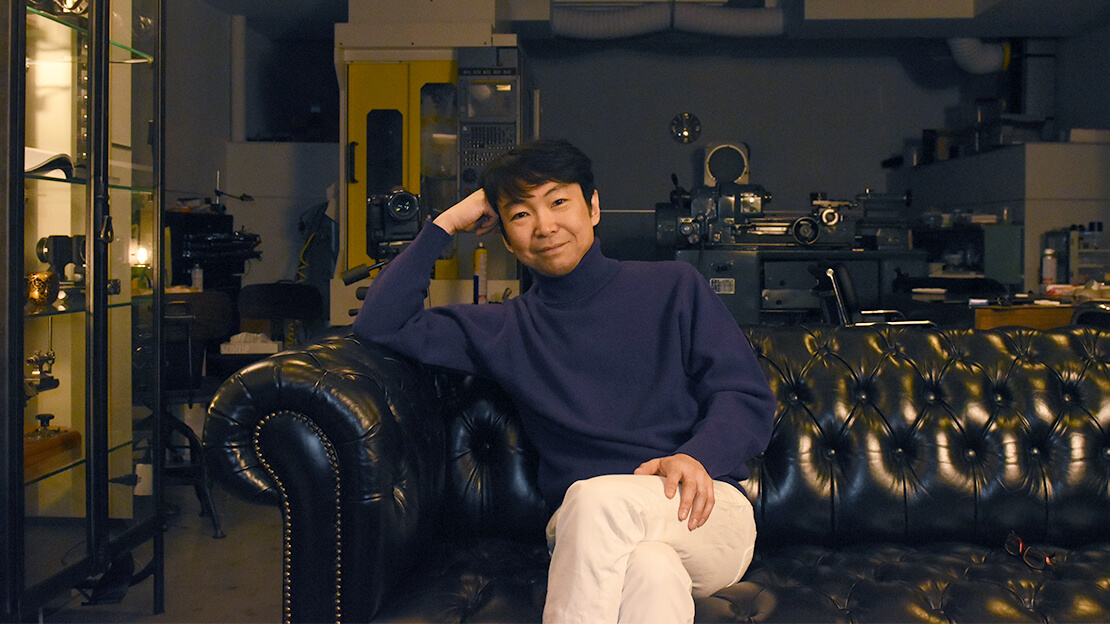
Independent watchmaker Hajime Asaoka in his Atelier. He felt that someone like himself would never be able to buy his watches, so he created Kurono Tokyo to be more accessible while still having many of the details he finds special.
With Kurono Tokyo, what he has created, along with the company that oversees what he does as well, is a line of very affordable pieces with a very pleasant and distinct aesthetic and attention to detail while still becoming affordable by the use of things like commercial movements and larger case makers.
Many more traditional watch industry enthusiasts or insiders would say that they wish he were using in-house movements but I feel what they miss is the fact that there is an entire world that enthusiast and fans or even those that are not enthusiasts but just would appreciate this stuff. It is a different market almost, a different group and they are all just waiting to jump in.
Also many people don’t realize that creating an in-house movement is something that brands can take decades to do and still not get right. This is evidenced by the many horror stories of watch servicing that have come along since the relatively recent (historically) in-house push. In-house movements were never as traditional as people think. It was people like ETA and Unitas and Valjoux that supplied many of the movements for now iconic timepieces. Additionally, it makes it extremely easy to have commercial movements serviced because they don’t have to be back in Switzerland for the slightest thing. So, personally, I applaud their choice of using a commercial movement or a more easily available Japanese movement because it gets pieces that people would love onto more wrists.
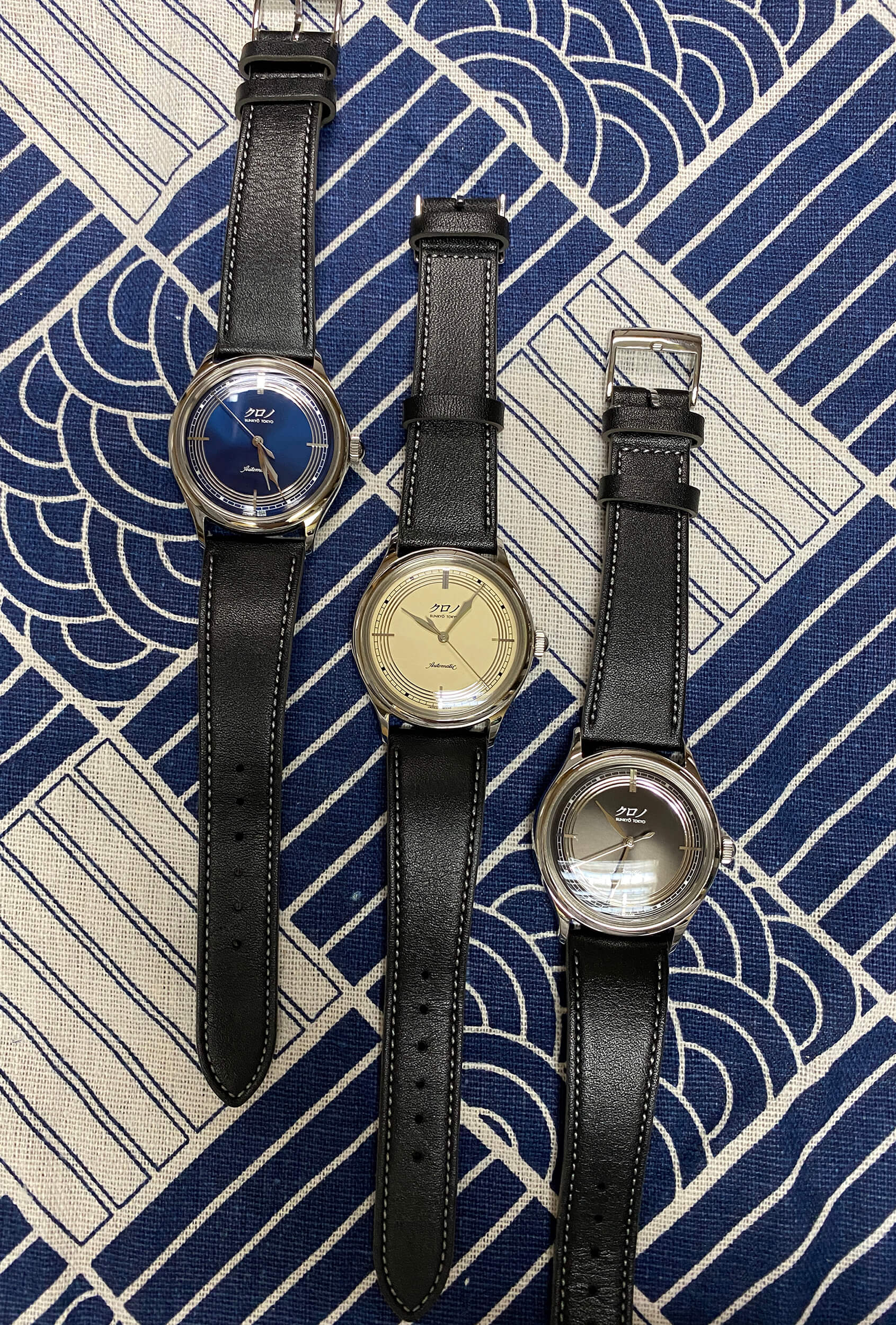
A very rare opportunity to have three of the the first Kurono Tokyo watches in one place, at Lexus Manila appropriately enough. The Eggshell White available only from Sincere Fine Watch flanked by the eyecatching Midnight Blue and the subtly classic Mystic Grey.
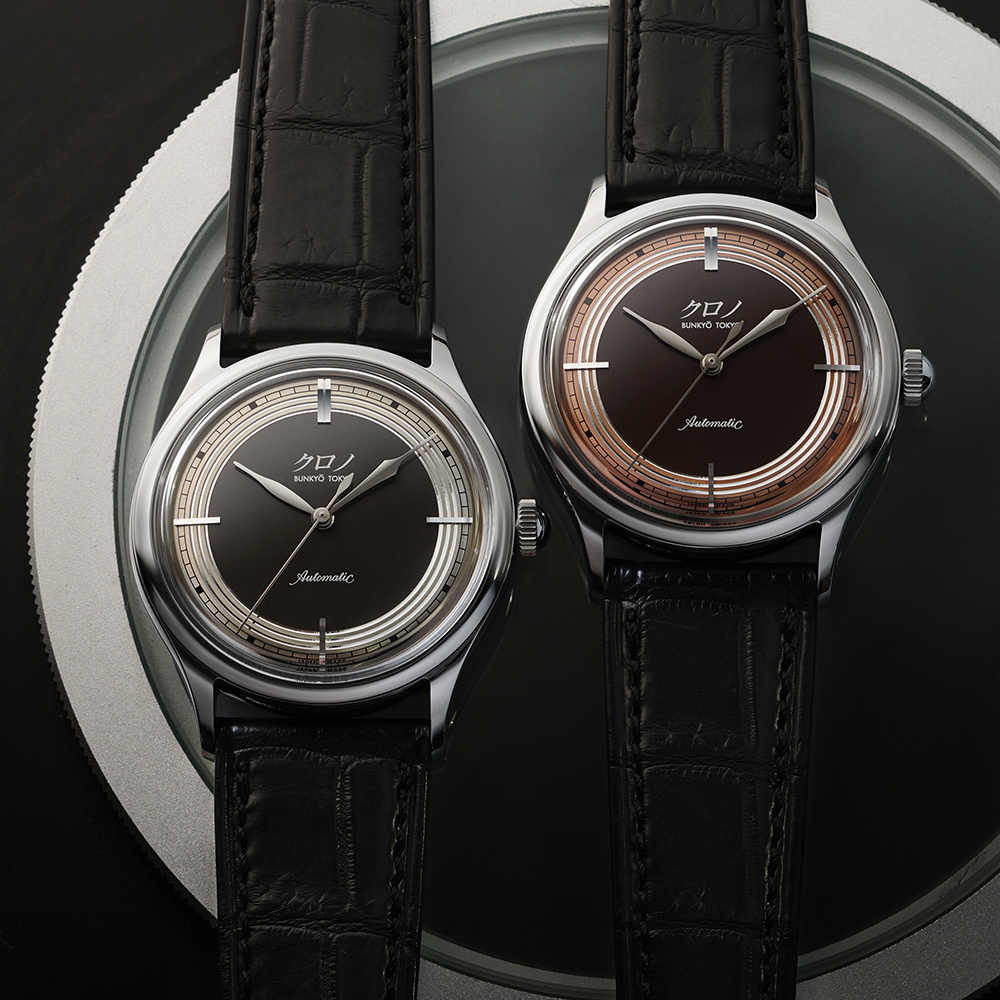
After the first Bunkyo classic watches, the Reiwa line (translated as Beautiful Harmony) brought a tinge of “metallic sophistication” to the simple center of the dial.
The first set of Kurono Tokyo pieces were very clean and very interesting. The classic Bunkyo Tokyo collection was released in 2019 in eggshell, midnight blue and dark grey. The key design details such as the rings continued with new colors with the Reiwas and then some special colors with the 2020 and 2021 Anniversary Issues Mori and Toki and the blue-green Seiji. The early Bunkyo and Reiwa models were released in runs of 50 pieces per dial variation, the Anniversary Mori with a run of 288. With the Seiji they tried to address demand a bit more with a run of 500. We try to use these simple and accessible three-hand watches as examples of how case shape is harder to create than most people know. And that each curve or each finish takes several additional steps. We like the multi level feel and look of the dials and the attention to detail of all the little components.
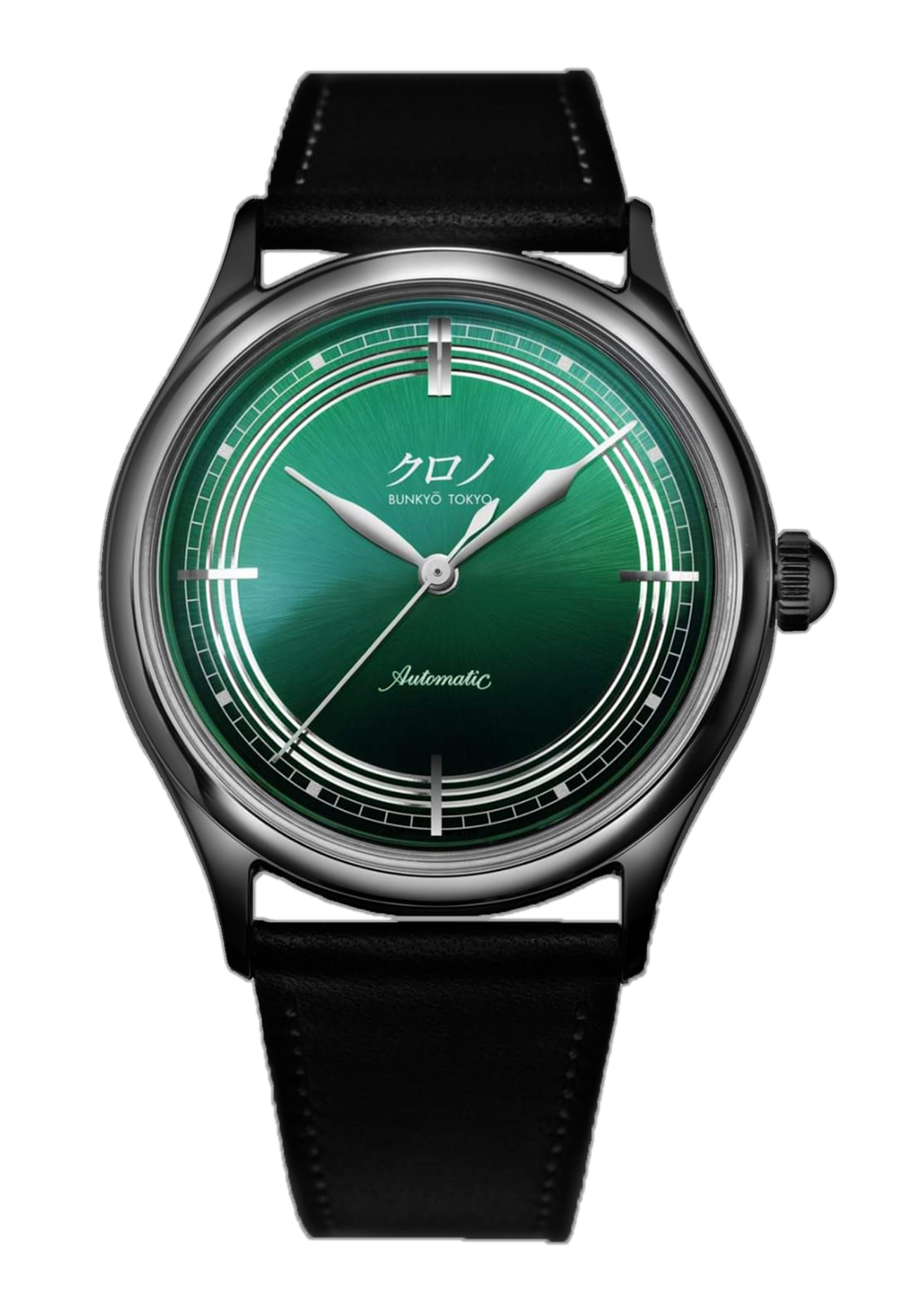
The Mori, released in celebration of the first anniversary of the new brand. A special color picked by Hajime Asaoka with a subtle sunburst pattern that shows different shades at different angles.
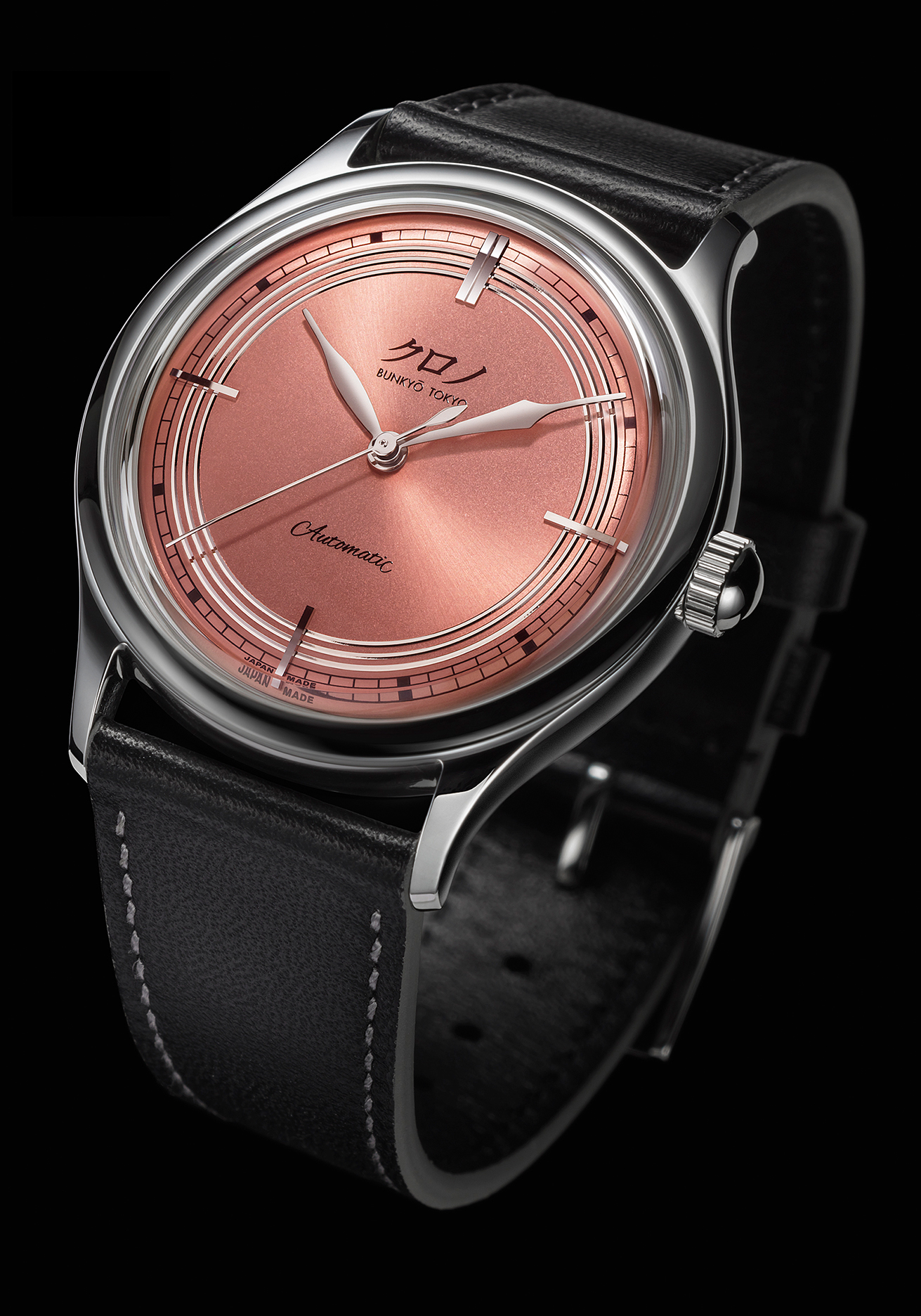
The second anniversary edition, Toki, uses another color chosen by Hajime Asaoka to be particularly Japanese, inspired by the country’s crested ibis, an auspicious bird with feathers that remind one of the rising sun.
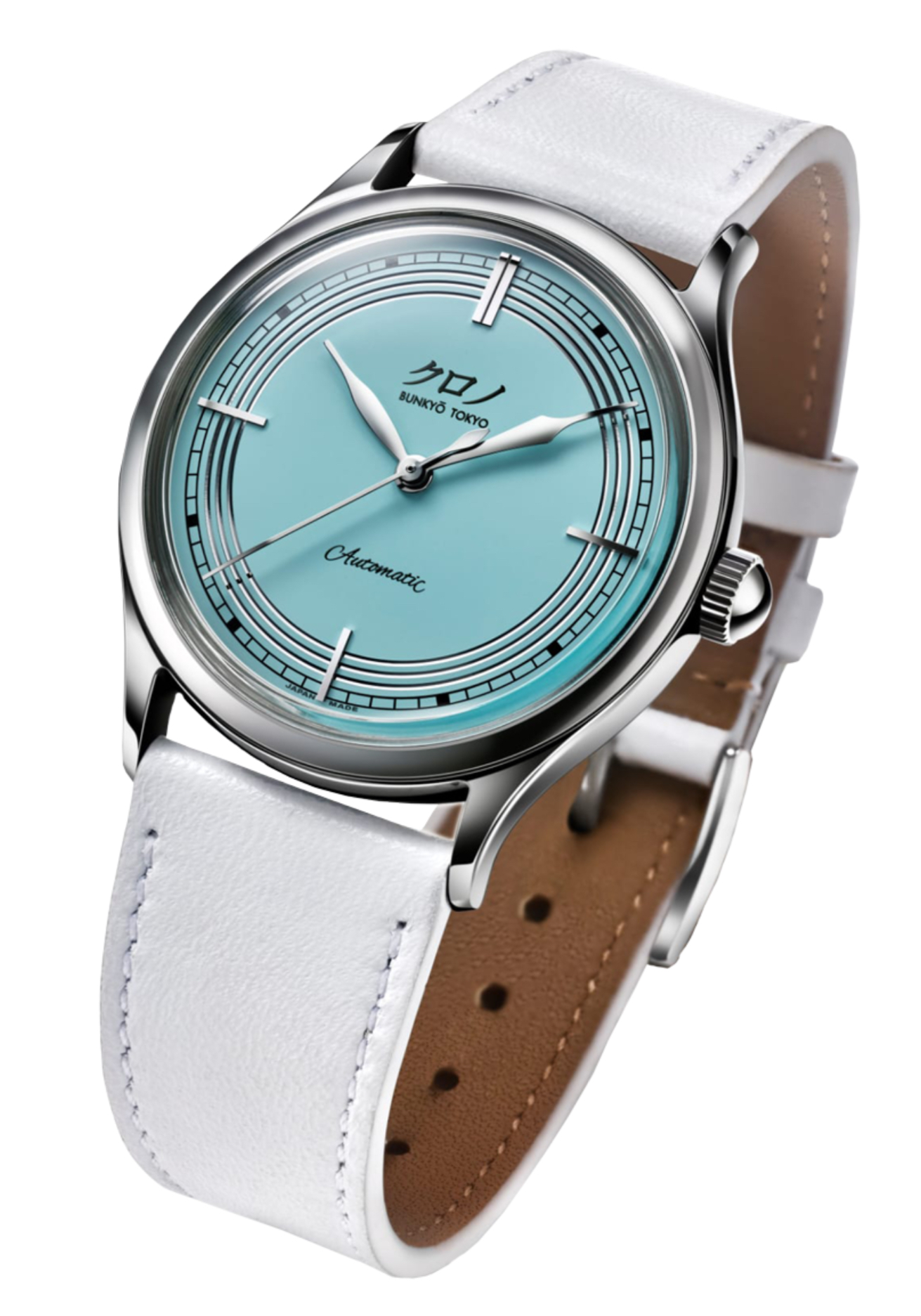
Seiji was a piece meant specifically for female collectors, though it’s celadon-like blue-green lacquer dial appealed across the board. It also marked an increase in the stated limitation number, with 500 pieces made available.
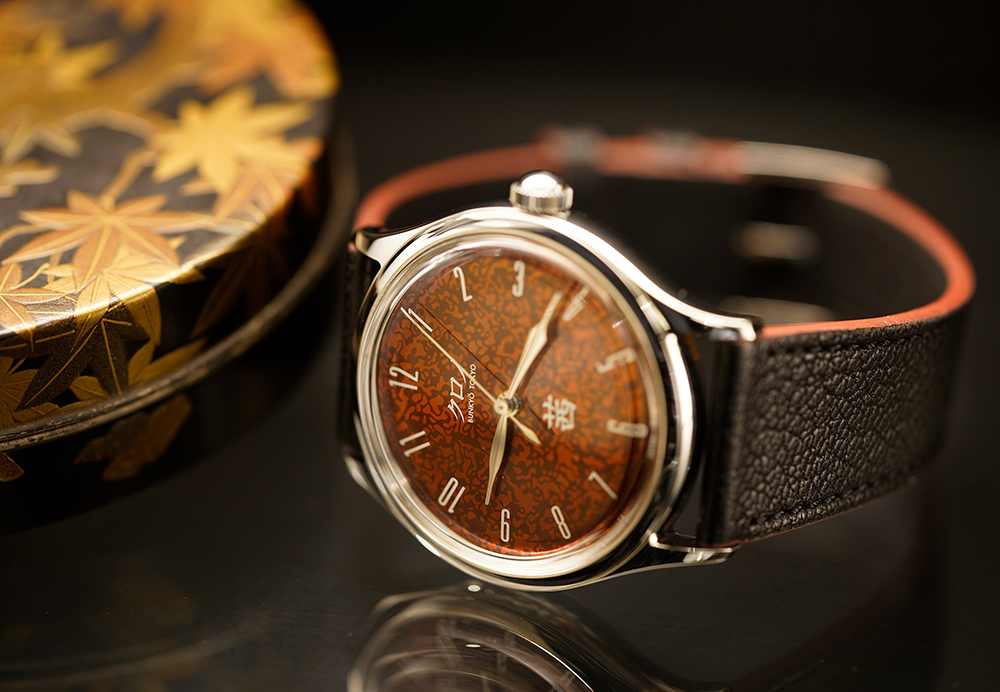
The first of a new line, the Grand:Akane is a stunner. Hard-to-work Japanese Urushi lacquer with an additional layer of transparent “suki-urushi” and a “hamon” pattern on the dial that reminds one of sword metal. The 200 piece limited series was sold in minutes.
They decided to go into the more crafted pieces in the Grand Line that brought in a whole different aesthetic. We much appreciate this because of our love of the Japanese art and craft of Urushi and Makie and the different processes that are very different from what the Swiss and Europeans would do. There is a depth to the look of Urushi lacquer, and it can change over time. The Grand Akane was executed in a reddish Urushi but with a Hamon pattern finished with a Niiro treatment.
The Grand Hagane has a more subtle color, kind of a dark amber but with the tobiyaki spots that would be seen in the hitatsura style of Hamon. Indices on the Grand Hagane are silver and in Japanese characters, while on the Grand Akane they are western digits.
We have seen the numbers of production of Kurono Tokyo grow with each model announcement and we have seen the clamor when people are unable to get the watches they want. This is a very hard thing to sort out and the fact that they tried to do so is commendable.
Comments were made online were that is was hard to get online and pay in the short amount of time that these watches were available, which because of demand was sometimes 10 minutes or less, for a global launch. But at the same time we know that there are people who were able to buy these pieces and the ones we know are the enthusiasts and the collectors and even the first time buyers of a watch like this.
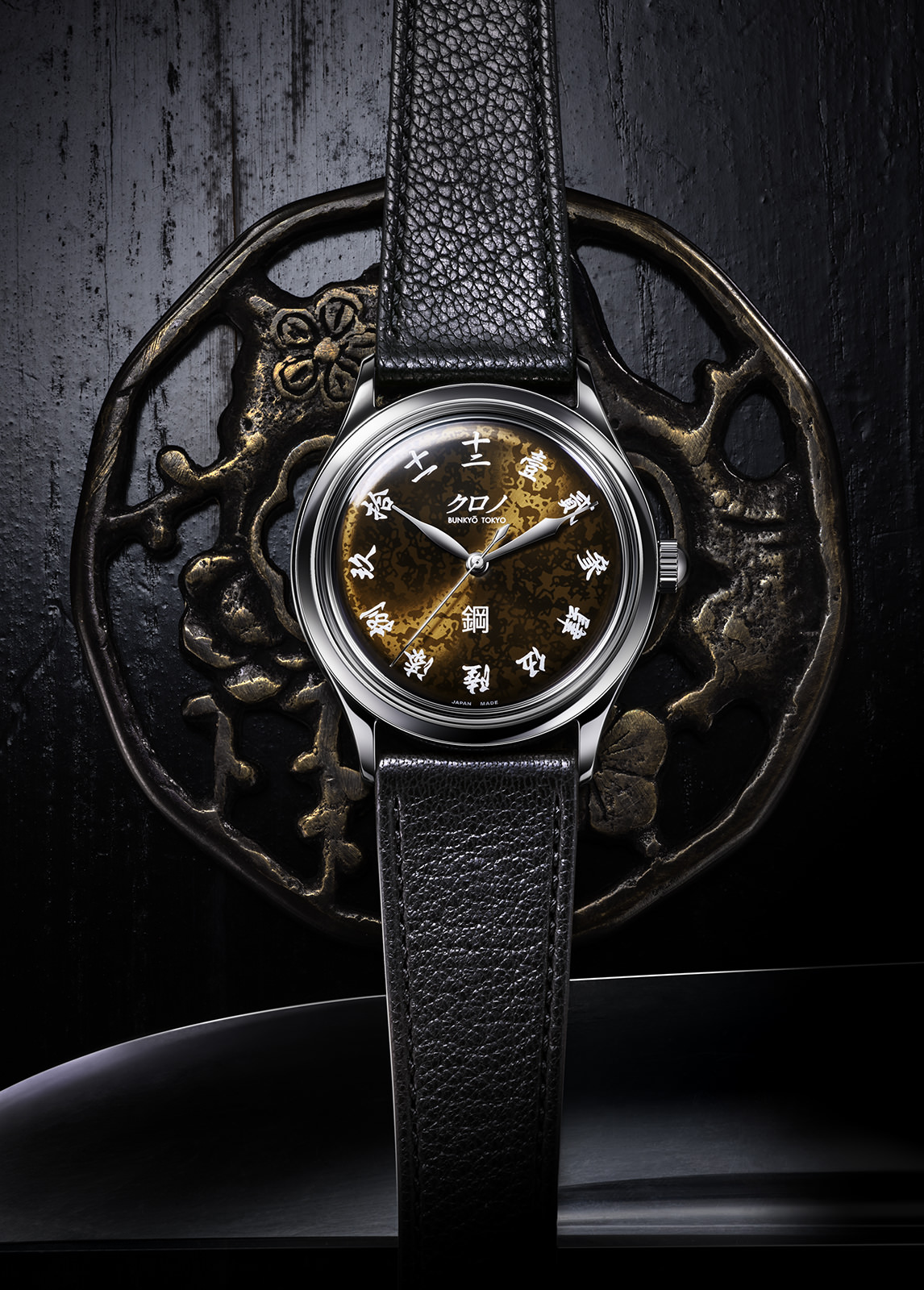
The Grand:Hagane is another stunner. Inspired by the high purity steel “tamahagane” used in Japanese swords, the craftsmen used several thin layers of Roiro Urishi lacquer. Specially polished so the tamahagane pattern on the base metal would show through. This latest release had no stated limitation number other than “in the hundreds”
We do believe it was fair, there is no real hierarchy or ability to flood the request system as far as we can see other than the company’s attempt to help those that believed in them from the very beginning. But that isn’t guaranteed either, and indeed collectors would wait for the email saying they had a chance to try as well. Kurono Tokyo has taken more steps than others in trying to curtail the flipping of watches and are very open about what they tried to do. This includes banning certain buyers and doing their best to police automated purchasing systems. They do however have to answer to market demand and it is indeed a reality in the watchmaking world that often you make more people unhappy because you can’t release enough watches. In reality, as the Calibre organization we have sometimes been asked not to talk about certain watches just because the demand is so high it just creates bad will more than happy buyers.
This most recent release of Kurono Tokyo of the Grand Hagane is to me their most interesting yet and I like the Grand Line more than I like the chronograph line. They did not announce any number limitation other than saying it would be in the hundreds (the Grand Akane was limited to 200), also they will be putting the name of buyers on every box as their attempt to make sure that the pieces went to those that would love them. Personally I think that is a great idea for those that really want to keep the watches. Funnily enough this was recently a tactic used by video game sellers because of the demand of the PlayStation PS5.
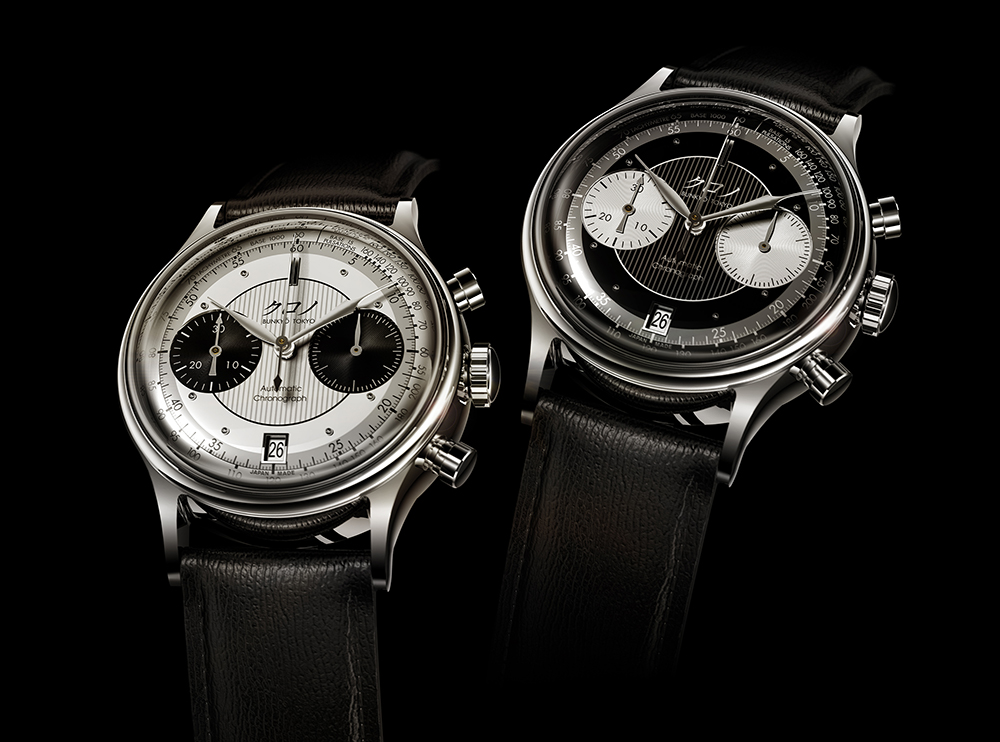
The first Kurono Tokyo complication past time-only. Dial detail is eye-catching not just in color choice but also in detail. Subdials finished in a concentric guilloche pattern and the subhand uses a traditional kyudo arrow shape. The box sapphire crystal brings the dial detail to life. 68 pieces of each variant.
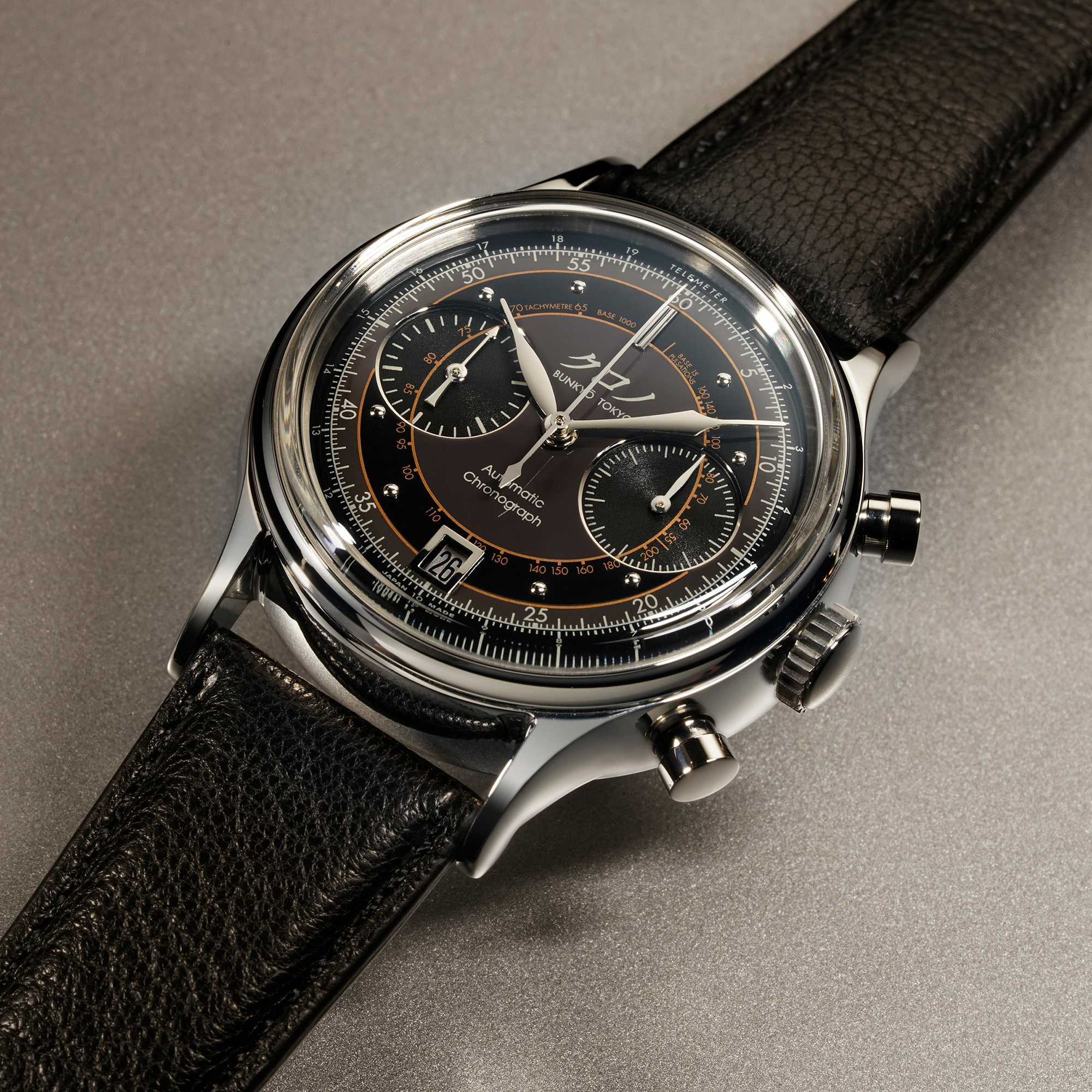
The second Kurono Tokyo Chronograph (simply called Chronograph II) brought forth the copper, silver and dark brown colors that had proven so popular with the Reiwa line to the complication, giving it a very classic and understated look. This watch also saw the increase in availability with the limitation also going up to 500 pieces.
Kurono Tokyo has also released two models of chronographs, with a somewhat art-deco look to them but also with details such as a subdial hand in the shape of a traditional Japanese Kyudo arrow. These also have grown in release numbers, with Chronograph 1 having 68 pieces per dial variant and Chronograph 2 having 500 pieces available.
With Kurono Tokyo you have the very unusual ability to get in early on a brand that is growing drastically but still sticking to its roots and its core strength. It is part of a global trend that is really at the heart of watchmaking. There are people making dials all over the world just because they want to make them a particular way, and maybe sell a few. There are watch makers and finishers and repair people all over the world who are bringing new life to old movements and then turning them into wristwatches that will get more use than their pocket watch donors. Most of these are entrepreneurial, or artist level, or craftsman level. People that don’t think of being a big corporation but rather something small allows them to do what they love to do. And that may eventually grow into something bigger.
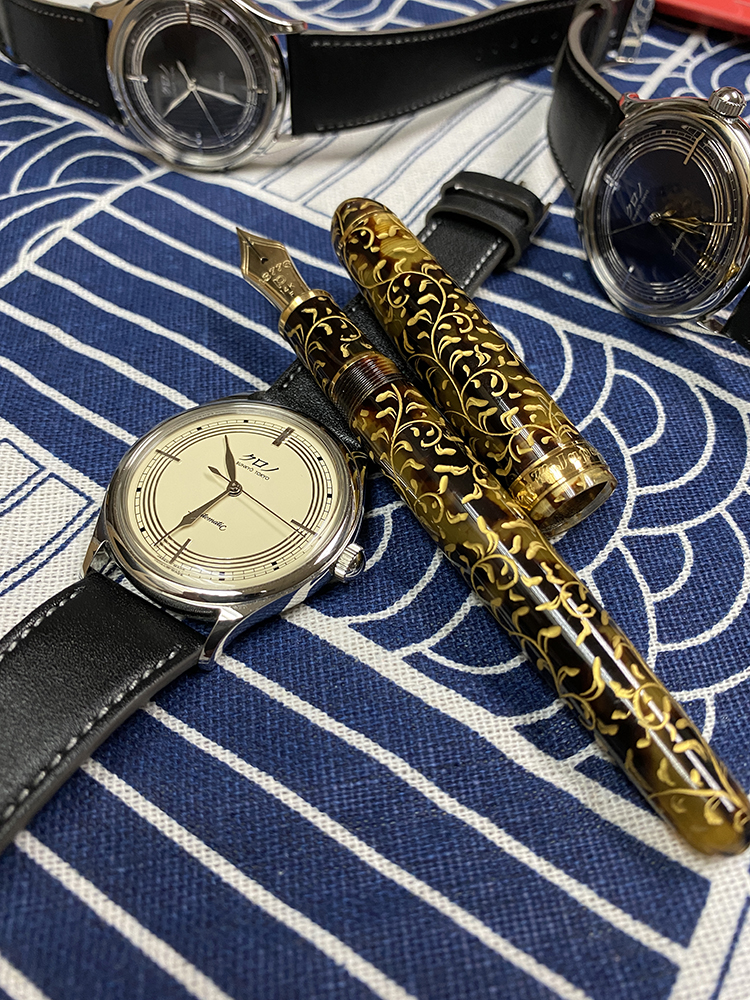
Just because we could. Wonderful examples of modern takes on Japanese craftsmanship. The Bunkyo Tokyo Eggshell White and a Platinum 3776 Fountain Pen created in the last run of tortoise shell celluloid with a hand-engraved Chinkin Karakusa pattern that is even rarer than the watch.
If you followed what we wrote about before about the fountain pen industry we said that the fountain pen collection dynamic now was what the watches were like decades ago. You had an increased number of small makers, and artisans and craftsmen and artists that were trying to do their own pieces. There were enthusiasts who were able to touch base with different suppliers and make custom pieces that could go on to become something more. And all this happened because enthusiasts from all around the world suddenly had the ability to get together.
Happily, this new wave of independent work is being seen in the watch industry again. People who love this stuff, just want to do more. And they want to share it. There was a while back where we were very happy that Japanese Urushi and lacquer work and Makie were being more appreciated by the mainstream because it meant that these crafts would have the financial viability to survive. However, we also noted that people were entering this industry and learning these crafts because of the job opportunities and honestly the money as opposed to learning it as a craftsman from their father or grandfather or their township. The craftsmanship would survive but is would start costing much more.
The way things have gone over the last few years it might not be the big companies that push this all forward. It may well be the small companies and the unknown people working in their garage or their backyard or their apartment window that communicate with those that love the craft and appreciate it and find their support and their market.
So, that is where Kurono Tokyo is now, at the ground floor swell of enthusiasm and communication and production ability that they can tap. As enthusiasts we may be looking at this part of history as a key sea change that will allow timepieces and their appreciation to continue for generations to come.


